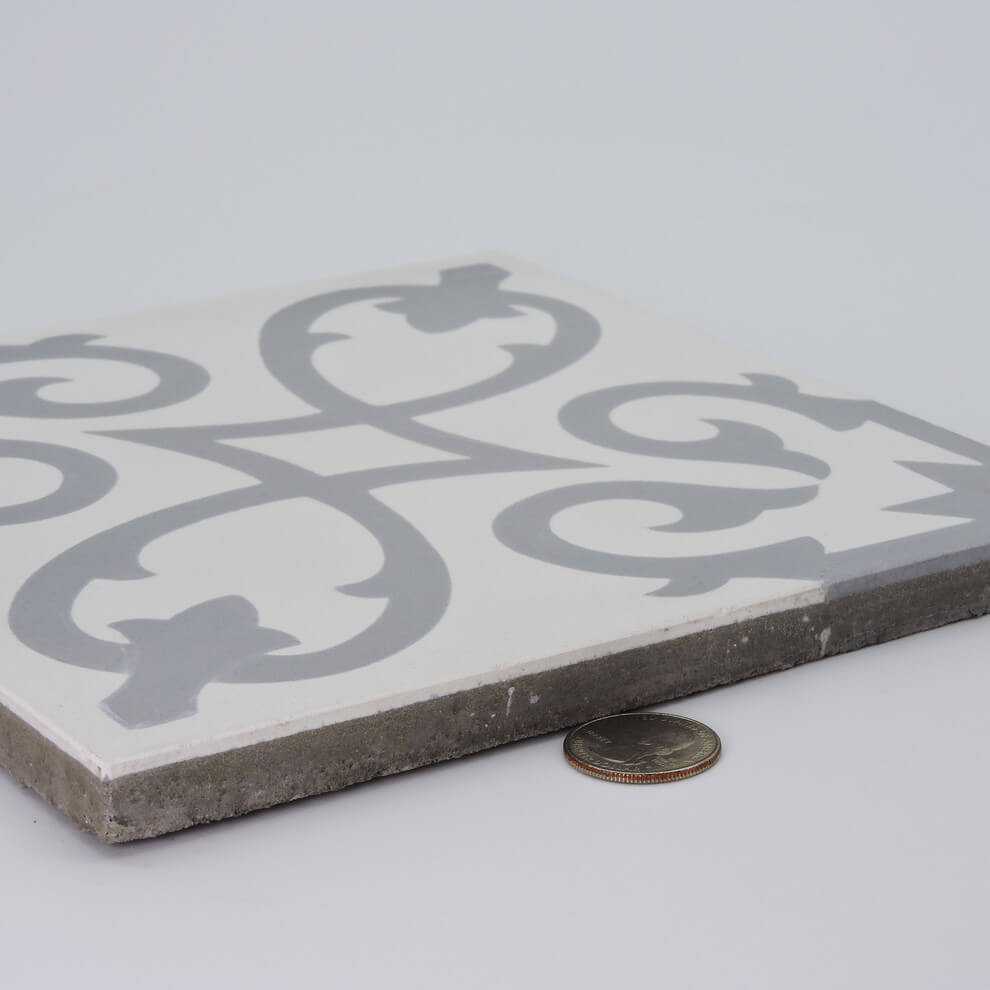For hundreds of years, for many buyers, ceramic tiles have been synonymous with quality and beauty. In recent years, cement or, as it is also called a cement-sand tile, has been trying to squeeze its position. We offer to compare them.
Manufacturing technology

Ceramic tiles are manufactured in a fired process and can withstand heat, frost, rain, and snow without any problems, even for decades. The color depends on the deposit from which the clay was obtained. Thanks to the natural color scheme, ceramic tiles create a unique roof covering that is in great harmony with the natural environment.

Cement-sand tiles are formed under high pressure by extrusion, and then after heat treatment, they gain their strength in natural conditions, which is hugely energy-saving. As a result, low production costs (compared to ceramics) and the market price of finished products, while cement tiles boast attractive aesthetic properties, high durability, and life cycle.
Features of ceramic and cement tiles
Thanks to firing at high temperatures (it is dried and fired in an oven at 1000 ° C), ceramic tiles are non-flammable, resistant to temperature extremes, and have excellent frost resistance – they can withstand 150 freezing defrosting cycles unchanged. Cement-sand tiles also have slightly lower indicators of resistance to temperature changes – their “hardening” in extraordinary chambers contributes to the fact that they withstand 100 freezing and defrosting cycles. Due to the used production technology, it has low porosity and moisture content. As a result, the coating is resistant to moisture as well as biological corrosion. Applying an engobered layer to a tile reduces its moisture content from 8% to 5%.
Cement shingles are usually coated with a layer of acrylic or acrylic silicate paint, which gives them a smooth surface, excellent UV resistance, and protection against contamination. Its moisture content is reduced to as much as 2.5%, and frost resistance is further increased. Both types of shingles are highly durable and rugged. After firing, clay becomes a rigid material, similar to concrete. Due to its strength, the tiles are resistant to scratches.
Durability
Ceramic tiles have a reputation for being the most durable material (they will successfully serve for 100-150 years), confirmed by many years of experience and traditions of its use; despite the appearance of a natural patina, it does not lose its aesthetic preferences. Cement shingles have a short history. Manufacturers define its durability at 70-100 years. However, over time, cement tiles do not include age as beautifully as their ceramic predecessors.
Features of installation of tiles
The recommended angle of inclination of the roof for cement tiles is 22-60 °, but under certain conditions, the range can be extended to 10-90 °. For ceramic tiles, the angle of inclination is 22-45 °; on steeper roofs, it is recommended to fix each tile element to the lathing, and on roofs with a lower slope, lay them on a solid sheathing covered with roofing felt or a film of the appropriate type. Ceramic tiles without additional protection are placed on roofs with an inclination angle of 16-44 °, diamond-shaped – can be mounted on ceilings with a tip of inclination of 10-65 °. Roofs are covered with grooved tiles, the angle of inclination of which exceeds 22 °. Other types of roof tiles with a slope of 30-40 °. On steeper ones, each element must be attached. The presence of “locks” on it dramatically facilitates the process of laying grooved tiles.
How much does a natural roof weigh?
All types of tiles create an average load on the roof structure up to 50 Kg / m2. Cement tiles weigh 45-50 kg / m2 on average. Ceramic approx. 40 kg / m2. But we must also forget that the rafter system (if designed taking into account the requirements of the DBN of Ukraine) must withstand loads of more than 300 kg per 1 square meter. Therefore, the weight factor of the roofing material can be considered insignificant when choosing.
Heavy surfacing has two significant advantages – it suppresses noise and, when properly installed, can withstand the onslaught of powerful winds. During a storm, the tiles behave like keys: raise and lower. Experience shows that if individual elements are damaged, they can be easily replaced. The roofing of the tiles suppresses external noise, which means that the sound insulation in the attics of houses with such a coating is good, which allows you to reduce the cost of insulation materials.
Additional elements
Manufacturers of both types of shingles often offer a complete set of shingles and other elements to cover all sections of the roof: gable shingles for laying at the fronts, walk-through shingles for installing installations above the roof level, transparent for providing light access to the attic, as well as various elements for curved sections, with a minimal radius. Snow protection accessories are also available, and those that make it easier to move on the roof (roof and support steps).
Roof maintenance and repair
Because the tiles are small in size, you can efficiently perform the necessary work related to the preservation and repair of the roof: remove the damaged element and replace it with a new one. It is easiest to work on a top covered with grooved tiles. You can lift it to stand with your feet directly on the crate.
In general, as you can see, both ceramic and cement-sand tiles are pretty similar in their characteristics. But the highest quality ceramics already has a proven and centuries-old reputation around the world, and cement tiles have yet to prove the characteristics declared by the manufacturer in practice.
The post appeared first on .